by Zeidan Kafafi, Professor Emeritus, Yarmouk University
The Beginning
In the academic year 1967–1968 I enrolled as a student at the Department of History and Archaeology at the University of Jordan. Unfortunately, in that same period the Arab-Israeli Six Days War began on June 5, 1967. As a result of the war, in 1968 the American Schools of Oriental Research (ASOR; now the American Society for Overseas Research), already based in Jerusalem, decided to establish an archaeological research center in Amman. For this purpose, they rented a building located very close to the third circle in Amman that belonged to one of the members of the Khalifeh family.
During that time, we had Egyptian and Syrian professors, and in 1969 one of them, namely Greco-Roman specialist Fawzi Fakharani, decided to take nine of us students to visit the so-called Temple of Hercules on the Amman Citadel. During our visit we visited the excavation of American archaeologist Rudolph Dornemann. That was my first experience with American archaeologists. In 1970 we were lucky to have Professor Bastiann Van Elderen, then director of ACOR, to teach two courses in archaeology at the University of Jordan: Research Methods in Archaeology and Field Archaeology. In addition, he took us to visit the archaeological site of Tell Hesban and trained us in the field by excavating a church in Amman’s Sweifiyyeh neighborhood (Fig. 1). That was the beginning of my relationship with the American Center and American archaeologists.
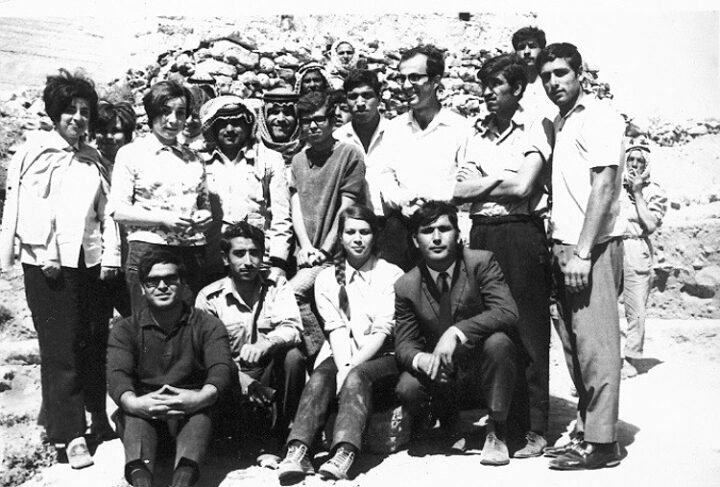
ACOR Was My Second Home (1973–1977)
In 1973, the University of Jordan started an MA graduate program in archaeology, and Bastiann Van Elderen was one of the professors who established its plan of study. At that time I worked as the curator of the University of Jordan Archaeological Museum and had the chance to enroll in the program. Van Elderen taught a course on Byzantine culture. In addition, during the time Henry (Hank) O. Thompson was director of ACOR (1972–1973), he started the Tell Siran excavation and found the well-known bronze bottle with what is considered to be the first complete inscription in the ancient Ammonite language. He was followed by Bastiann Van Elderen, who continued the excavation with the participation of a group of American students (Fig. 2).
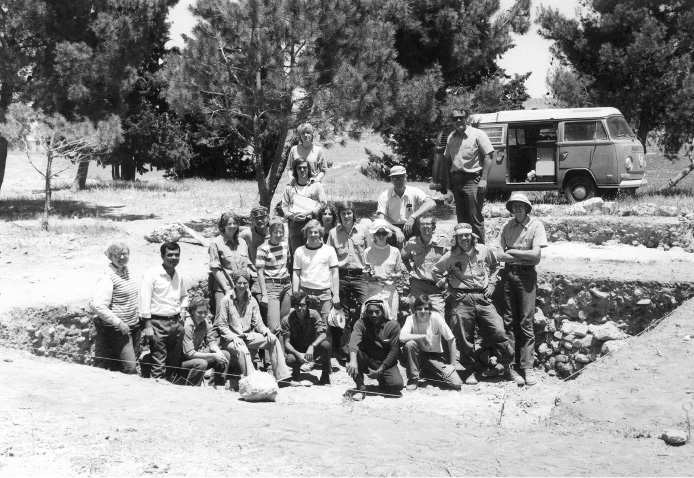
If I remember well, van Aldren left the ACOR directorship in late 1973, and his appointed successor was Prof. George Mendenhall of the University of Michigan, Ann Arbor. His field of study was ancient Near Eastern civilizations. During his teaching career at the University of Jordan, he taught a course on the epigraphy and history of the ancient Near East, and in June 1975 took us on a trip to Wadi Muqat in the Black Desert to copy, register, and study Safaitic inscriptions (Fig. 3). In addition, at that time James Abbot Sauer was a fellow at ACOR and along with Mendenhall conducted an archaeological excavation at the Ammonite site of Umm er-Rujm with the participation of the MA students, of whom I was one. Moreover, in May 1974 he resumed archaeological excavations at the site of Rujm Khilda (Fig. 4) with the participation of archaeology MA students from the University of Jordan and a few American volunteers; of them, I still remember the name “Richard Dorsett.”
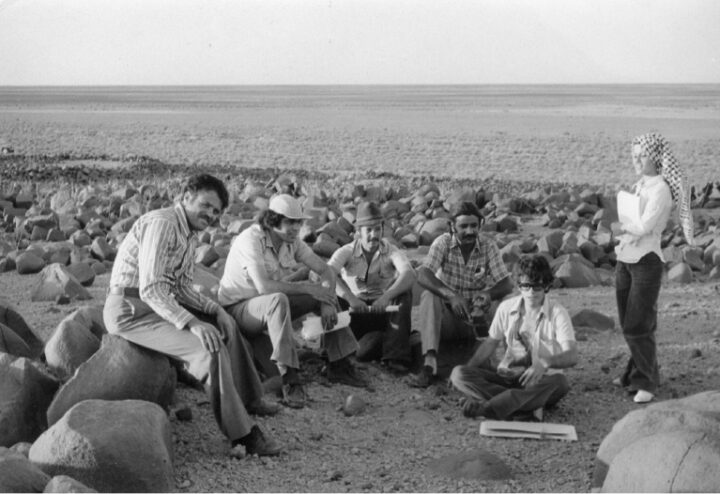
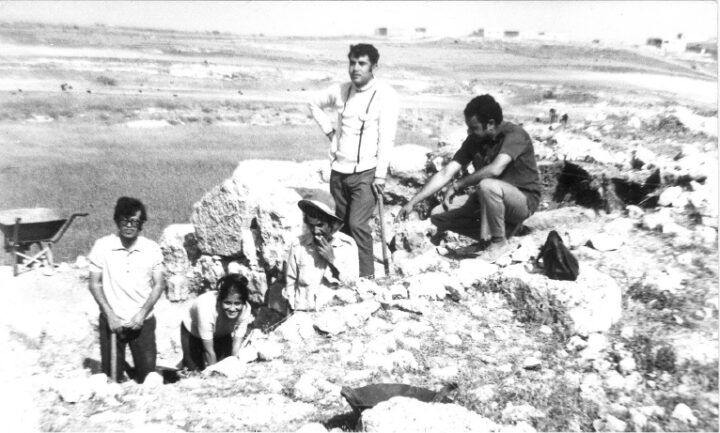
In the 1975–1976 academic year, James Sauer (Fig. 5) took over from Mendenhall, and to our good fortune he began teaching archaeological courses at the University of Jordan. I enjoyed very much his course “Ancient Pottery of the Holy Land,” and I presented a paper entitled “The Late Bronze Age Pottery in Jordan: East Bank,” which later became the subject of my MA thesis. In addition, the MA students had been invited to participate in the 1974 season of excavations at Hesban (Fig. 6). At the dig, I was introduced to American senior archaeologists, and I am much indebted to Larry Herr, who was my area supervisor in Area D, Square 2, for training me in the field of archaeology (Fig. 7). At the dig, and along with James Sauer, I was honored to be introduced to Larry Geraty, Roger Boraas, and my square partner, Orly Nelson. I became much more acquainted with American excavating methods and habits by living with the expedition team for almost six weeks. That following year—1975—was a decisive one for my future career. I became very close to James Sauer and decided to write under his supervision my MA thesis, which I defended on June 19, 1977. The late Walter Rast was a member of the examining committee.
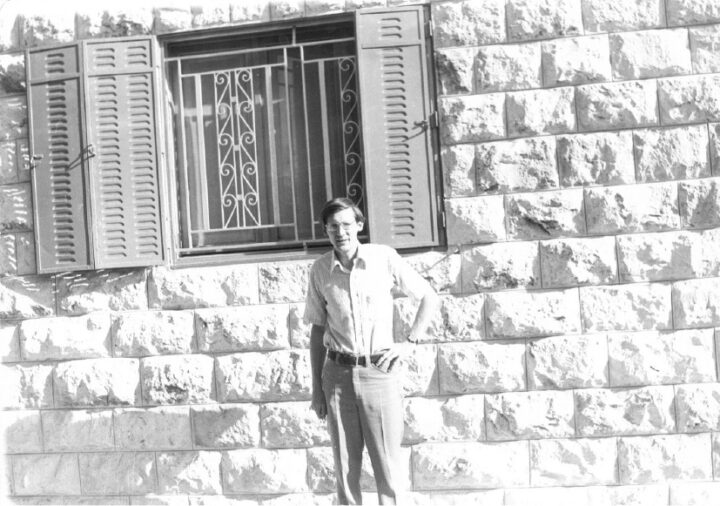
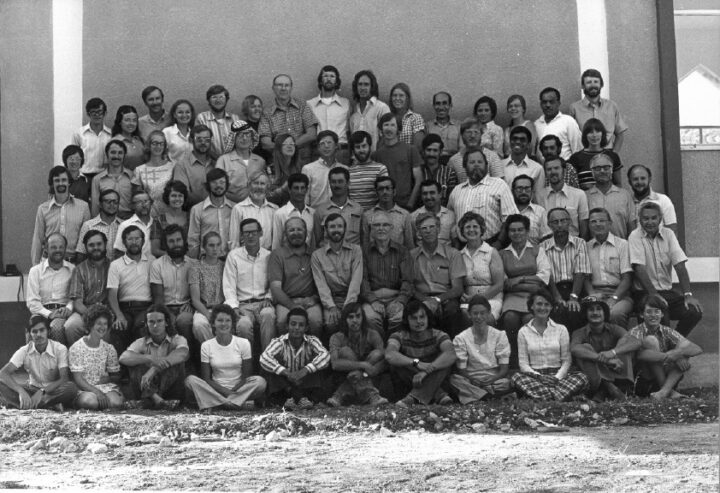

The year 1975 was full of joint archaeological fieldwork conducted by ACOR and other Jordanian archaeological institutions, such as the Department of Antiquities and the University of Jordan. One example is the Jordan Valley survey, which was conducted under the co-directorship of James Sauer, Khair Yassine, and Mo’awiyah Ibrahim. It was my good luck to have participated in the two seasons of this survey, 1975 and 1976, and I learned much from Sauer by attending his reading of the pottery found at the sites visited (Fig. 8).
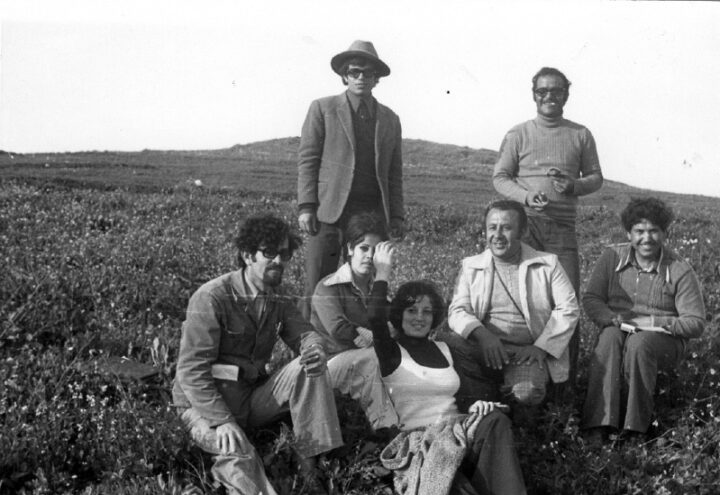
James Sauer became my mentor in my studies, and I found myself very much attached to him. Due to this, I became a regular visitor to ACOR and remember very well the flavor of Sue Sauer’s brownies. At that time, ACOR had only a small library, but it was very useful for me, and because I had started working on the material and writing chapters of my thesis, I met with Jim for long hours during the week. ACOR became like my second home. This lasted until I sat for the defense of my thesis, which took place on June 19, 1977, and I am very proud to mention that in addition to Jim, I had Walter Rast as a member of my thesis examination committee (Figs. 9–10). James Sauer is the one who put me on the real track of archaeology, and to him I will be indebted for my whole life.
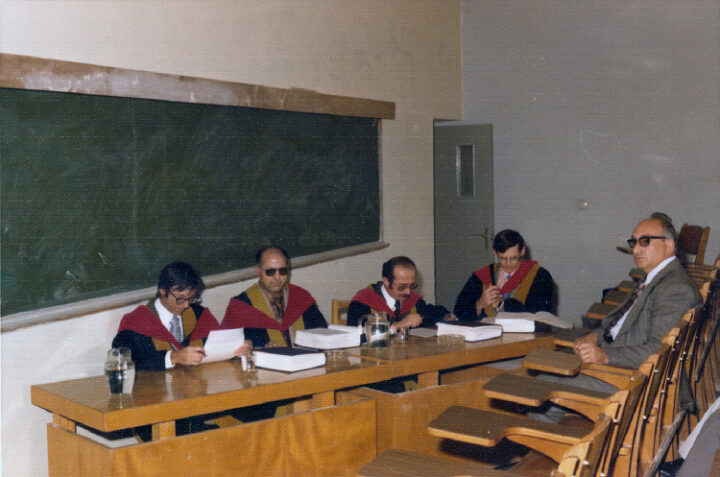
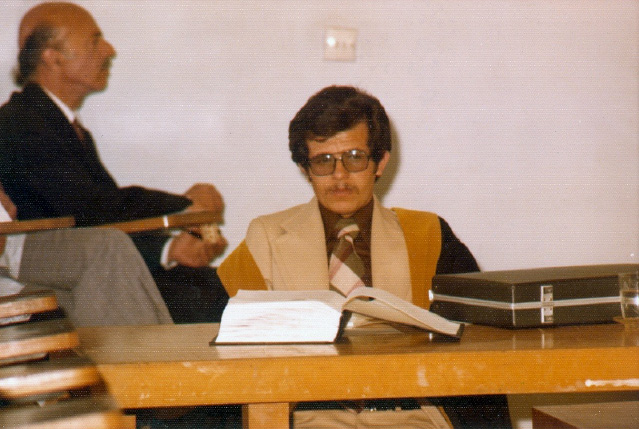
During winter 1977, Khair Yassine, then professor of archaeology at the University of Jordan, agreed with James Pritchard of the University of Pennsylvania to excavate Tell es-Sa’idiyyeh, in the Jordan Valley. However, this excavation was cancelled due to security reasons, and most of the American students returned home, except for few of them, and one of these being Barbara Porter. Khair decided to continue his excavation plan, but instead at Tell Mazar. There, I worked hand in hand with the American participants on the dig, and I have been very close friends with Barbara Porter since that time (Fig. 12).
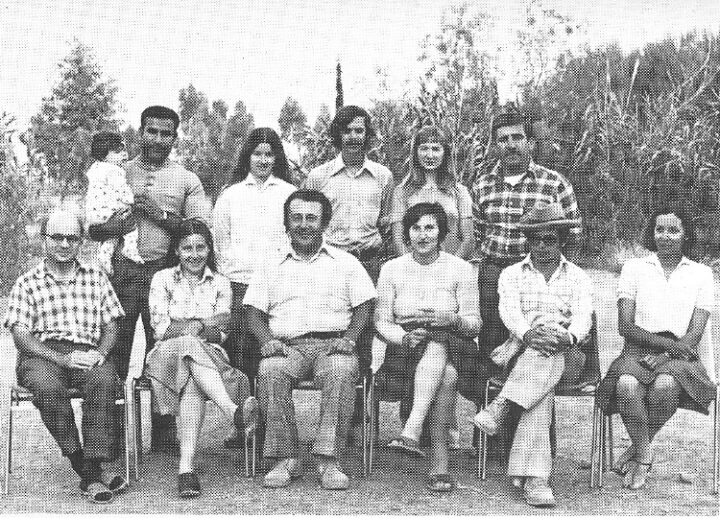
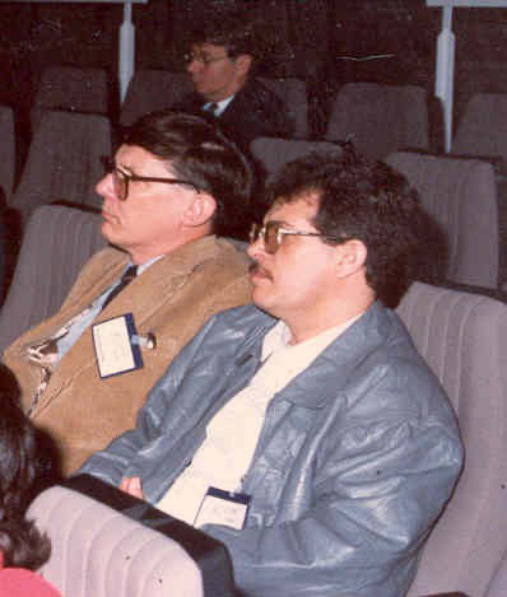
After my successful MA defense, I was very eager to pursue my PhD studies at one of the renowned American universities. I was in fact admitted to several of these, but without receiving any scholarships. Thus, I applied to the Deutscher Akkadmischer Austauch Dienst (DAAD), received a scholarship, and left Jordan on October 6, 1977, for the city Freiburg, where I learned the German language. This did not prevent me from continuing my relationship with my adored professor James Sauer or with ACOR (Fig. 12). I remember that during my studies in Germany I presented some books to the ACOR library. In addition, I shared with James Sauer all my interpretations of the archaeological material I obtained from the Jordan Valley Survey to use for my PhD dissertation.
I cannot remember exactly when (either in 1975 or 1976) ACOR moved from Amman’s 3rd circle to the 6th, though I preferred the older building to the new one. Jim started thinking of buying a piece of land to build a permanent residence for ACOR. I never stopped communicating with James Sauer, then the director of ACOR, during my time in Berlin, and in winter 1979 I came back to Jordan to study the pottery sherds and flint tools from the survey for my PhD dissertation, and ACOR was my study base. I used ACOR’s library, and ACOR’s draftsman (I believe Abdel-Razzaq?) helped in drawing the pottery sherds under study.
ACOR, My Research Center
After I finished my PhD studies in 1982, I returned to Jordan and joined Yarmouk University as an assistant professor. Because of this, we moved to Irbid, but I still went to ACOR to use the library and contact people there. I believe it was in 1981 when David McCreery took over the ACOR directorship from James Sauer, but this did not mean I stopped going to the center. David is a very nice and helpful person, and he was the one to finish construction of the new ACOR building and the move from the 6th circle to Tla’a Ali. Professor McCreery participated in numerous excavations, most notably at Bâb edh-Dhrâ` and Numeira (Jordan). In addition, he served as co-director of the Tell Nimrin excavations in Jordan.
From 1982–1984 I taught for the Department of Humanities and Social Sciences of Yarmouk University, where we had several American faculty members, among them Robert Gordon, Gary Rollefson, and Scott Rolston, in addition to research assistants, including the photographer Cowherd and his wife. Those colleagues helped to establish the Institute of Archaeology and Anthropology of Yarmouk University under the directorship of Mo’awiyah Ibrahim, who was behind this.
In 1984 I began my Jebel Abu Thawwab excavation (on the highway leading from Sweileh to Jerash), and David McCreery came to visit me several times. I remember that Larry Herr and some of the Tell ‘Umairi expedition team also joined him. During the second season of excavations, ACOR asked Yarmouk University to accept the participation of around 15 American students who came to Jordan through the President’s Council for International Youth Exchange to participate on the Jebel Abu Thawwab and Khirbet ez-Zeiraqoun projects (Fig. 13). In return, a group of Yarmouk University students was to be invited to visit several universities in the USA, and this is what happened.

In the year 1979, the famous site of ‘Ain Ghazal was exposed during the process of bulldozing the highway connecting the capital Amman with the city az-Zarqa to the east. In the beginning of the 1980s, Gary Rollefson, who was a fellow at ACOR, and Khair Yassine, professor of archaeology at the University of Jordan, visited the site and decided to start rescue excavations with the cooperation of the Department of Antiquities. Unfortunately, Khair was asked to leave the project by the DoA, and ACOR and the Department of Antiquities continued the rescue excavations. In 1983, Gary joined Yarmouk University as a faculty member, and I benefited from this in that I obtained permission from the dig to study “the white-ware objects.” In 1984, Gary was offered a job at San Diego State University. He left Yarmouk, and I took over the project from him as Yarmouk University’s representative (Fig. 14), although the project continued to be a joint Jordanian-American project. Because of this project, I became acquainted with many American archaeologists who either participated on the dig or who came to stay at the ACOR residence. Gary Rollefson, Alan Simmons, and I became like brothers.
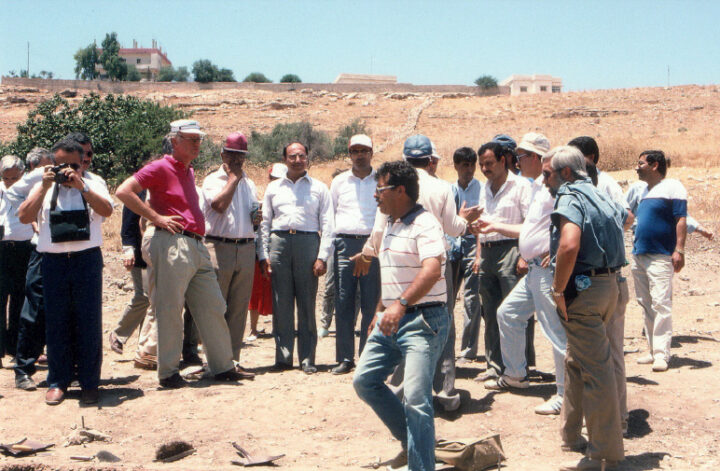
It can be stated here that during all seasons of excavations at ‘Ain Ghazal, and also durin the Wadi Shu’eib 1988 and 1989 seasons, ACOR was always involved in offering either financial help and/or a place to study, as well as facilitating the American members’ accommodation. ACOR’s permanent building was opened in 1986, a major milestone for which David McCreery deserves credit. Bert de Vries followed David McCreery as ACOR’s director (1988–1991). During this period, I was outside Jordan on sabbatical leave without pay, first at the Free University of Berlin and then at King Sa’ud University. Bert’s main archaeological interest was in documenting, restoring, and presenting Jordanian architecture from antiquity. His main love was the multi-period city of Umm el-Jimal in the Basalt Desert in northern Jordan. Yarmouk University faculty members and students were also involved in his Umm el-Jimal project.
ACOR as a Partner
In 1991, I returned to Yarmouk University from my sabbatical and leave without pay, which lasted for three years (1988/1989–1991/1992), and I was appointed as a director of the Institute of Archaeology and Anthropology at Yarmouk University. During my work, I continued the same policy of cooperation with all national and international archaeological institutions. During my period as director of the Institute (1991–1997), Patricia and Pierre Bikai were the directors of ACOR, from 1991 to 2006. Their publications and numerous fieldwork projects were a major contribution to the archaeology of Jordan. Moreover, in 1987, the cultural resources management (CRM) program was established jointly with the Department of Antiquities, with the purpose of preventing the destruction of archaeological sites in Jordan. In addition, Gaetano Palumbo, the ACOR contracted archaeologist, published an inventory of around ten thousand sites under the title “JADIS,” the Jordan Antiquities Database and Information System. All my surveyed or excavated sites were registered in this inventory.
During the tenure of Pierre and Patricia, we kept up the good relationship between our two institutions and I remember that I was always invited either to participate in workshops or to meet people at ACOR, and visa-versa, with Pierre being a regular visitor to the IAA/Yarmouk. I still remember his Arabic song to me, saying:
على دلعونا وتحت الصفصافة وينو حبيبي زيدان كفافي
والله لأرحله وأمشي له حافي لوكانوا رجلي عم يوجعوني
Pierre and Patricia’s main interest in the archaeology of Jordan was concentrated in Petra, and the excavations of the Great Temple and the Petra Church took all their time. The discovery of the Petra Church papyri absorbed much of their attention, which helped in the decipherment of these Byzantine-era documents. Pierre Bikai was also the person who advised the University of Arkansas, Fayetteville, delegation to visit Yarmouk University in 1997 and to seek the possibility of starting a joint CRM project (Figs. 15–16). That delegation, consisting of William Schwab and Jerry Rose, and accompanied by Pierre and Ghazi Bisheh (then director general of antiquities), visited Yarmouk University and successfully negotiated a plan to apply to USAID to finance such a project. In addition to the exchange between faculty members of the two universities, a joint excavation project was started at the site of Ya’moun. In September 1997 I finished my role as director of the Institute of Archaeology and Anthropology and was assigned as a dean of research and graduate studies at Yarmouk University. Although I changed positions, I continued my cooperation with ACOR.
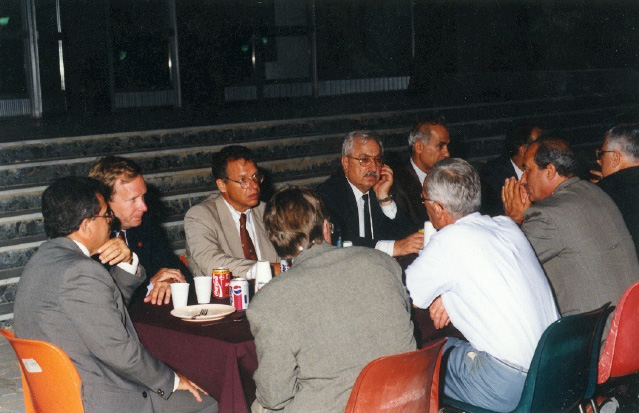
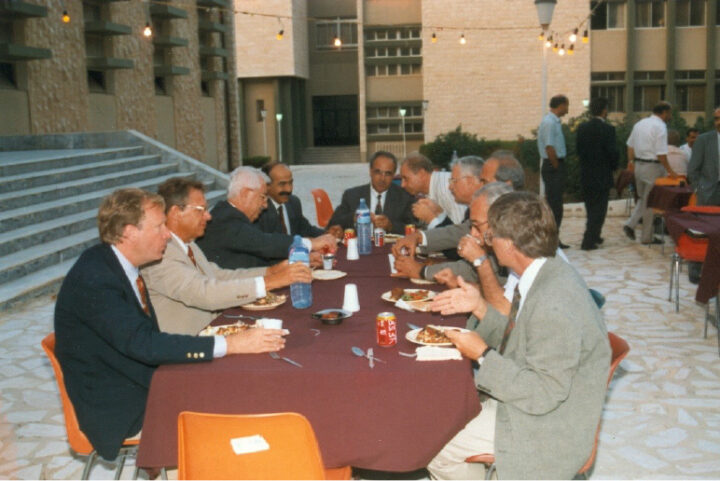
Welcome to My Friend Barbara

Pierre and Patricia Bikai were followed in the directorship of ACOR by an excellent and very close friend of mine with whom I worked at the Tell Mazar excavation in 1977, namely Barbara Porter (Fig. 17), who kept this position from 2006 until 2020. During her stay in Jordan, Barbara Porter became a friend to many Jordanians and became acquainted with Jordanian habits and customs. In addition to this, she was enormously active in studying, presenting, and preserving Jordanian archaeology. One of her most excellent accomplishments was organizing the International Conference in the History and Archaeology of Jordan in Washington, D.C., in 2007. Many Jordanian archaeologists and I were involved in the arrangement of and participation in this conference. Moreover, she much enlarged ACOR’s library collection. Due to this, it became well visited by researchers and students. She also organized a mostly monthly lecture series discussing the archaeology of Jordan, and I was a regular visitor to those events. In addition to this, during her directorship, ACOR assisted projects through its library as well as with the ACOR Conservation Cooperative, created in 2007. Under Barbara’s leadership, ACOR began implementation of the USAID-funded Sustainable Cultural Heritage Through Engagement of Local Communities Project (SCHEP) in 2014. As a result of this project, there are now several archaeological projects that were adapted to different site-specific or urgent needs, such as rescue excavation at Beit Ras and, more recently, the excavation of the Ammonite site Khirbet Abdoun.
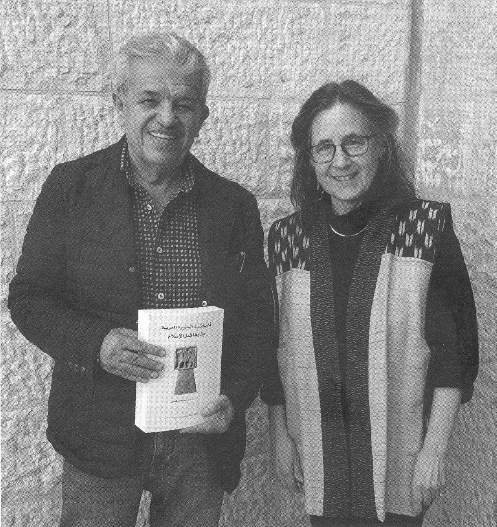
For a researcher, the best place to go to is ACOR’s library, but in return one must give back something in thanks; thus I presented to the library all my published books (Fig. 18). Barbara Porter’s chapter in my festschrift (published in winter 2023) contributed an informative article discussing the ACOR’s role in Jordan’s heritage over 50 years. This number of years equals my number of years in very successful and fruitful cooperation with ACOR. In addition, Barbara finished her work as ACOR’s director in 2020, and I finished my job as a president of Yarmouk University in 2020 and went into retirement. Thank you to my dearest friend, Barbara. To show our gratitude and love to Barbara, we gave her a farewell party at our home (Fig. 19).

Pearce Paul Creasman
In February 2020, Dr. Pearce Paul Creasman became ACOR’s director. Dr. Creasman’s scientific interests focus on the heritage, archaeology, and environment of the Middle East and North Africa. Dr. Creasman is a cooperative and helpful archaeologist; this is reflected in his encouragement to Jordanian archaeologists regarding their publications. He continues to open the doors of ACOR’s library to all Jordanian researchers.
ACOR has influenced my archaeological career greatly and helped me in my archaeological studies and research. Many thanks to ACOR for being an excellent factor in my life.
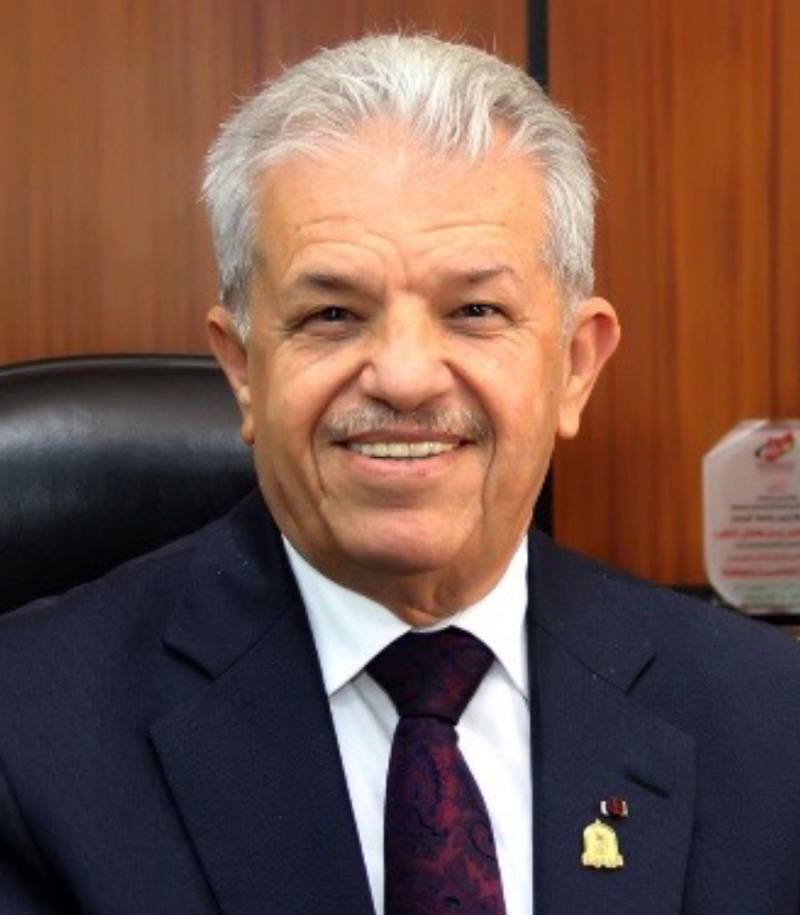
Zeidan Kafafi received his PhD in February 1982 and since then has taught general and specialized M.A. courses at the Department of Humanities and Social Sciences (1982–1984) and in the Faculty of Archaeology and Anthropology, then the Institute of Archaeology and Anthropology, (1984–present) of Yarmouk University. His major field research and subsequent publications have centered on archaeological excavations and surveys, with special emphasis on Neolithic sites in Jordan (‘Ain Ghazal, Abu Hamid, ‘Ain Rahub, eh-Sayyeh, and Abu Thawwab), which contributed to a better understanding of the Late Neolithic periods and their material culture, as well as connections with neighboring regions. In addition to the Neolithic period, he is interested in other early periods, such as the Chalcolithic, the Bronze Age, and the Iron Age; thus, he has directed or participated in expeditions at sites related to those periods, among them Abu Hamid, Deir ‘Alla, Mugheir, Dhaher el-Madina, and Tell Damiya. The results of his research have been presented in both local and internationally recognized journals. He has also been active in a wide range of university and community services and has received several prizes, presents, scholarships and awards from Jordan and other countries. A royal decree was issued on March 18th, 2018, by His Majesty King Abdullah II appointing Dr. Kafafi as the president of Yarmouk University. He served in this position until September 12th, 2020, and currently he is professor emeritus in archaeology.